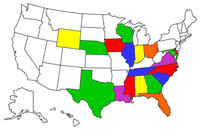I have just reviewed the AC the FAA has open for comments. I am very concerned and disappointed in the direction of this circular. I am also disappointed that the EAA agreed with this approach by the FAA.
The whole bureaucratic paperwork approach is in keeping with the FAA. CYA. It also is very prone to errors which I am sure the FAA would use to cite pilots if/when there is an issue. We know how the FAA loves to get us when we make a paperwork mistake.
Why does an OP have to have a minimum of a Private Pilot License? It should be Sport Pilot as this AC is for E-LSA as well.
The whole idea of this new second pilot program is to give the builder/owner some help with phase 1 and to encourage them to find a good qualified pilot to help them early on with their flight testing so they don't try to do it all themselves.
The whole idea of the Matrix and having to reach a certain score to be the QP is so Government. So is having to have 500 hours to be a QP.
This whole concept needs to be scrapped. It needs to be simple and without the government heavy handed paperwork approach.
EAA should oppose this approach. The FAA should not be involved in this at all.
Also having this program only for kit aircraft with certified engines and not Turbine aircraft is crazy. It should apply to all A/B aircraft and E-LSA period.
I would like to know what other EAA members think before I submit my comments to the FAA.



 Reply With Quote
Reply With Quote


